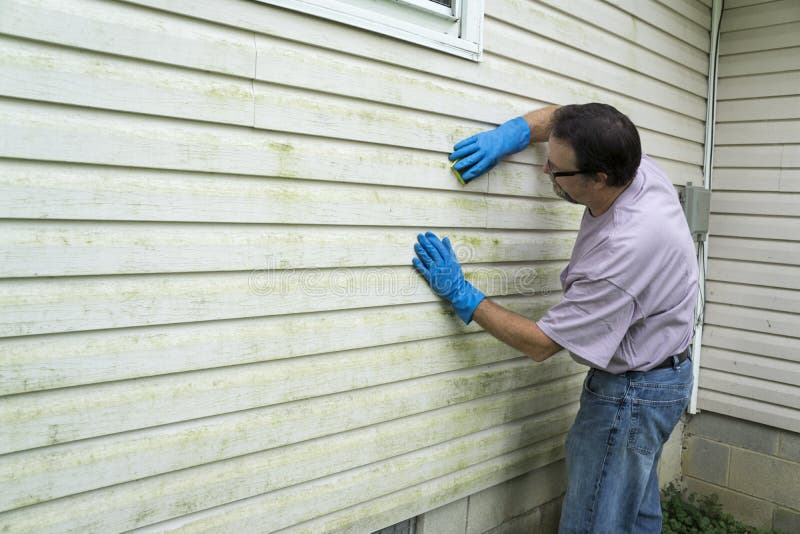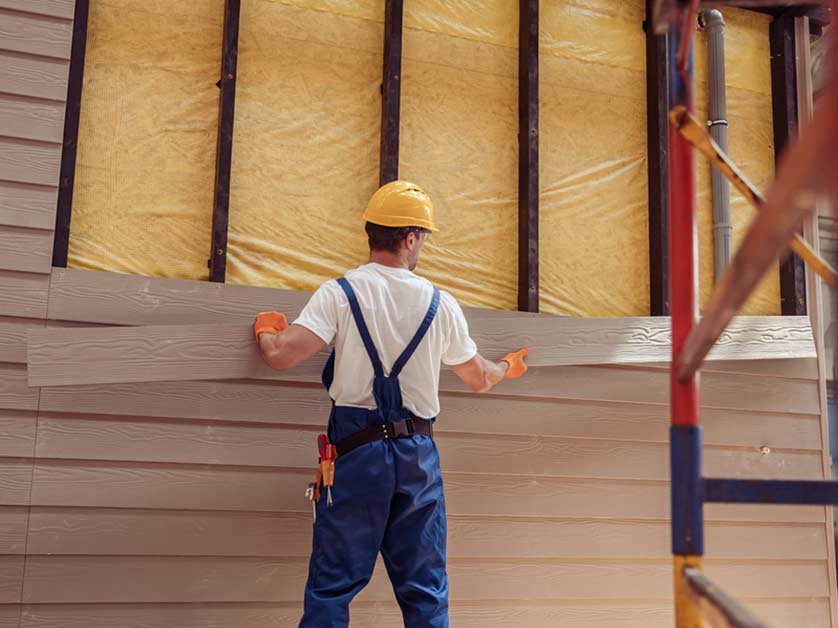The Essential Guide to the Different Kinds Of Home Siding and Their One-of-a-kind Benefits
In the world of home enhancement, selecting the ideal exterior siding is a vital decision that influences both aesthetic charm and practical efficiency. The range of materials readily available, such as wood, plastic, fiber concrete, metal, and block, each offer special benefits that accommodate different requirements and preferences. Recognizing these differences can considerably boost the long life and worth of a home - morris siding contractor. Nevertheless, with numerous options to think about, which house siding material truly stands out for your particular project? Exploring these options can bring about educated decisions that line up with both style and usefulness.
Wood Exterior Siding
Timber exterior siding, a prominent choice for property exteriors, supplies an ageless aesthetic that incorporates all-natural charm with structural integrity. This house siding material is offered in numerous styles, including clapboard, shingles, and board-and-batten, allowing home owners to personalize their façade to match their layout choices. Wood house siding is generally crafted from resilient varieties such as cedar, redwood, or ache, which are known for their durability and capability to stand up to environmental stress factors.
One of the main advantages of timber house siding is its outstanding insulation buildings, which can add to power effectiveness and reduced home heating prices. Furthermore, wood home siding is eco-friendly, making it an eco-friendly option when sourced sustainably. Normal upkeep, consisting of paint or staining, can extend its life-span and enhance its look, enabling home owners to maintain the natural appeal of the wood.
Nonetheless, potential drawbacks consist of vulnerability to parasites, rot, and weather condition damages, demanding ample treatment and upkeep - morris siding contractor. In spite of these issues, when properly taken care of, timber home siding can offer a stunning and long lasting option that boosts the personality of a home while using a warm, welcoming ambience

Vinyl House Siding
Vinyl exterior siding has emerged as a leading selection for home owners seeking a low-maintenance outside choice that integrates resilience and affordability. This functional product is crafted from polyvinyl chloride (PVC), making it immune to numerous climate condition, consisting of dampness and UV rays. Therefore, vinyl home siding does not warp, rot, or discolor, ensuring durable aesthetic appeal.
Among the key advantages of plastic home siding is its extensive variety of styles and shades, permitting house owners to achieve the preferred seek their residential property without the requirement for constant repainting. In addition, plastic exterior siding is very easy to mount, which can dramatically minimize labor prices during construction or improvement projects.
Plastic exterior siding likewise contributes to energy efficiency. Numerous options attribute insulation backing, which enhances thermal performance, assisting to preserve comfy interior temperature levels and possibly decreasing power expenses. Its smooth surface area promotes easy cleansing, requiring just periodic cleaning with a yard hose pipe to remove dirt and particles.
Fiber Cement House Siding
Fiber concrete home siding has gotten traction among homeowners and builders alike because of its amazing mix of durability and visual convenience. Made up of a mixture of cellulose, sand, and concrete fibers, this home siding choice is crafted to hold up against severe climate conditions, consisting of high winds, heavy rainfall, and temperature changes, making it a lasting option for household outsides.
One of the main advantages of fiber concrete siding is its resistance to bugs, such as termites, and its non-combustible nature, offering enhanced fire safety and security. morris siding contractor. Furthermore, it is readily available in a vast range of appearances, shades, and styles, permitting house owners to achieve their preferred aesthetic without compromising efficiency
One more benefit is its reduced upkeep requirements; fiber concrete siding generally needs painting or staining every 5-10 years, which is less frequent than other materials. Its durability adds to a lower overall cost of ownership, as it reduces the need for frequent repair services or substitutes.
Eventually, fiber concrete exterior siding stands for an exceptional financial investment for those seeking a resistant, appealing, and flexible exterior choice, combining both type and feature to boost the home's visual allure.
Metal Home Siding
The attraction of metal house siding hinges on its durable resilience and contemporary aesthetic allure, making it a preferred choice for contemporary style. Offered in materials such as light weight aluminum and steel, steel siding supplies a series of colors and finishes, allowing home owners to accomplish a personalized appearance that enhances their style vision.

Power efficiency is another considerable advantage, as numerous metal siding products are created with insulation choices that assist control interior temperature levels. This can cause decreased energy expenses over time. Additionally, metal exterior siding is often recyclable, making it an environmentally pleasant selection for sustainability-minded homeowners.
The installment process for metal home siding can be fairly uncomplicated, leading to a quicker turn-around time for building and construction jobs. Overall, metal exterior siding combines functionality and style, making it a sensible option for those looking for a aesthetically enticing and enduring outside coating.
Block and Rock Home Siding
Brick and stone home siding sticks out as a classic selection that boosts the visual charm of any type of home. Known for their sturdiness and low upkeep, these websites products provide an extraordinary roi while boosting the building's aesthetic appeal. Readily available in numerous shades, structures, and patterns, brick and rock can be customized to suit varied architectural styles, from standard to contemporary.
One of the primary Recommended Site advantages of brick and rock home siding is their energy effectiveness. Both materials have natural protecting buildings that help manage indoor temperature levels, potentially minimizing cooling and heating costs. Additionally, they use premium fire resistance contrasted to other exterior siding options, adding to enhanced safety.
Another advantage is their durability. Block and stone can last for years, commonly requiring very little maintenance past periodic cleaning. Unlike wood siding, they are invulnerable to pests and rot, ensuring a lasting exterior that withstands the components.
Conclusion
In summary, the selection of siding significantly impacts a home's aesthetic charm, energy performance, and maintenance requirements. Each kind of exterior siding-- whether timber, vinyl, fiber steel, cement, or brick and rock-- supplies distinct advantages tailored to various homeowner preferences and ecological problems.
One of the primary advantages of timber house siding is its exceptional insulation properties, which can contribute to power efficiency and lower home heating costs. In addition, wood house siding is biodegradable, making it an environmentally pleasant alternative when sourced sustainably.One of the primary benefits of steel house siding is its resistance to various environmental elements.Energy efficiency is another considerable advantage, as several steel house siding products are made with insulation alternatives that assist regulate interior temperatures. Each kind of home siding-- whether wood, vinyl, fiber block, cement, or metal and rock-- Extra resources uses distinct benefits tailored to various home owner preferences and ecological conditions.